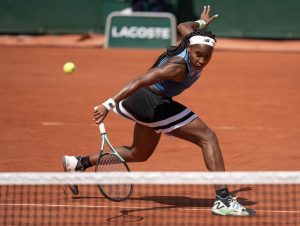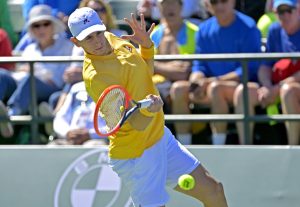It has been too long since the last ball was hit in anger. So the news that New York Governor Andrew Cuomo had given the greenlight for the US Open to go ahead in its traditional late August/early September slot was more than welcome, even without the presence of fans. Particularly because the global nature of tennis had led to understandable concerns that a resumption this year would be impossible, which would have been little short of a disaster, one the sport’s governing bodies deserve credit for avoiding.
But for all that it is understandable that the continuing coronavirus pandemic has forced the USTA, as well as the ATP and WTA, to make difficult choices, we would do well not to be too ebullient in celebrating the return of our sport. Doubles, for too long forced to play second fiddle to singles, appears to have been treated as something of an afterthought by the USTA, with the draw halved from the traditional 64 teams to 32.
Considering the comparatively limited earning opportunities for doubles specialists, this will be a difficult blow to swallow for the proponents of the discipline. All the more so after the axing of the mixed doubles draw, which provides doubles players with a valuable chance to add to their earnings, not to mention showcasing an increasingly rare form of the game. There are few, if any sports, that can boast tennis’ depth in the men’s and women’s games. Overlooking that seems foolish.
The decision not to hold a qualifying draw is also difficult to reconcile with the USTA’s claims that holding the US Open will grant players in need the chance to return to their careers. There is little money in the lower echelons of the sport and it is players ranked outside the top 100 who have been hit hardest by the suspension of the season. Unfortunately for them, they will not have the opportunity to begin to makeup those losses at the US Open, although the $6.6 million put aside to fund smaller tournaments is at least a start.
Perhaps the most egregious decision of all, however, was the USTA’s decision not to host a wheelchair tennis tournament this year. Wheelchair tennis may not attract the same level of interest from fans or financial rewards as other forms of the game, but that is a poor excuse for it to be overlooked entirely. That the USTA has yet to release a statement explaining their decision adds insult to injury and they deserve all of the criticism that has been levelled at them by wheelchair tennis players.
Indeed, it is difficult to describe their actions as any more than ableism, whether that was their intention or not. If able-bodied players are welcome to play at the US Open, then wheelchair players should be too. And the sport more broadly would do well to examine why it took wheelchair tennis players speaking up to draw attention to the USTA’s decision to axe it from the event. Tennis must be a sport for all, at the very least in aspiration. Instead, those at the top of the pile, who need the support of the game’s authorities the least, have been given the chance to return to their careers. Everyone else has been, in effect, hung out to dry.
Of course, to have the US Open as usual was never going to be possible this year. The coronavirus pandemic has disrupted nearly every walk of life and there are many who have suffered more than tennis players unable to ply their trade. But that does not mean that it should be forgotten that this is not the US Open as it should be. It is likely too late to change that now. But how the USTA respond to their failure to deliver what the sport deserves will go a long way to determining whether they should be forgiven.
Main photo:
Embed from Getty Images






